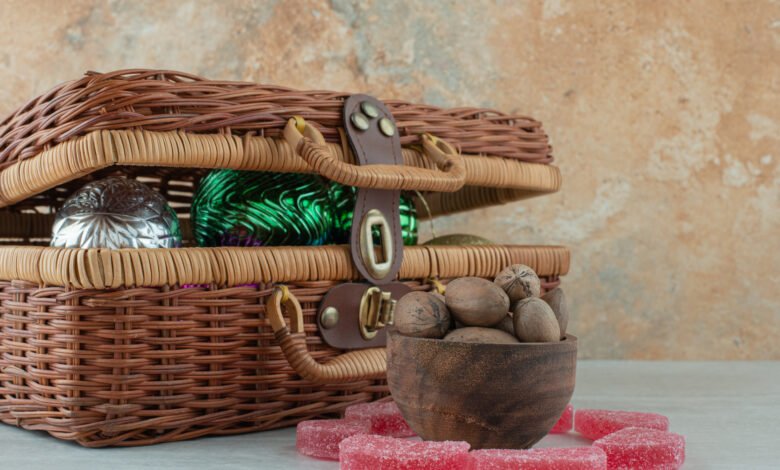Nikane Madeira: A Taste of Madeira’s Soul

Nestled in the azure Atlantic, Madeira—Portugal’s “Floating Garden”—is a paradise of volcanic peaks, emerald forests, and vibrant traditions. Among its hidden culinary gems, Nikane stands as a testament to the island’s cultural tapestry. Rooted in centuries of history, this humble yet profound dish embodies Madeira’s resilience, blending indigenous ingredients with influences from Portuguese explorers, African heritage, and Mediterranean flair. More than a meal, Nikane is a story of community, survival, and identity. In this article, we unravel the layers of Nikane, exploring its origins, significance, and enduring place in Madeiran hearts.
1. Origins: The Birth of Nikane in Madeira’s Hearth
Nikane’s origins trace back to Madeira’s early agrarian and fishing communities, where resourcefulness was essential for survival. Born from necessity, it utilized readily available ingredients—sweet potatoes, seasonal vegetables, and salted fish—transformed into nourishment through slow-cooking methods. The name “Nikane” itself hints at African linguistic influences, likely brought by enslaved peoples during Portugal’s colonial era, evolving into a distinct Madeiran dialect term for “simmered goodness.” Historically, it was prepared in communal wood-fired ovens (fornos comunitários), symbolizing shared labor and unity. This dish mirrors Madeira’s history: a fusion of seafaring trade, isolation, and cultural syncretism, where every bite carries the weight of generations adapting to an island of rugged beauty and scarcity.
2. Ingredients & Craftsmanship: The Alchemy of Simplicity
At its core, Nikane celebrates Madeira’s terroir. Key ingredients include Bolo do Caco bread (stone-baked sweet potato bread), espada negra (black scabbardfish), inhame (taro root), and aromatic herbs like erva-cidreira (lemon balm). The magic lies in its preparation: layers of salted fish, root vegetables, and greens are slow-cooked in a clay pot (panela de barro) with garlic, olive oil, and vinho de Madeira (fortified wine), infusing earthy depth. Unlike complex stews, Nikane’s brilliance emerges from restraint—ingredients speak for themselves, unadorned yet harmonious. This minimalist approach reflects Madeira’s ethos: transforming humble elements (salted fish preserved for long winters, homegrown tubers) into soul-warming sustenance. Each family guards subtle variations, passed down through oral tradition, making Nikane a living archive of culinary intuition.
3. Cultural Significance: Feast, Faith, and Fado
Nikane transcends sustenance—it anchors Madeira’s social and spiritual fabric. Traditionally served during festas (village festivals), religious holidays like Festa do Senhor Bom Jesus, or after arduous desterro (terrace farming) work, it embodies gratitude and resilience. Its communal preparation fosters convívio (togetherness), where elders share stories while stirring the pot, and children learn ancestral techniques. Symbolically, Nikane represents saudade—a melancholic longing for heritage—echoed in Fado songs sung beside crackling fires. During crises (wars, famines), it sustained communities, earning reverence as a dish of perseverance. Today, it bridges generations: elders savor nostalgia, while young chefs reinterpret it in urban tascas (taverns), ensuring its legacy thrives beyond folklore.
4. Nikane in Modern Madeira: Tradition Meets Innovation
Contemporary Madeira honors Nikane while embracing evolution. Upscale restaurants in Funchal, like Armazém do Sal, reimagine it with gourmet twists—adding saffron-infused broth or serving it deconstructed with edible flowers—yet retain its soul. Food festivals (e.g., Festa da Nikane in Santana) celebrate it alongside poncha cocktails, drawing global foodies. Sustainability drives innovation: chefs source organic batata doce (sweet potatoes) from Curral das Freiras valley and line-caught fish to protect marine ecosystems. Home cooks, too, adapt it for modern palates, using tofu for vegan versions or incorporating exotic spices from Madeira’s immigrant communities. Through cookbooks and YouTube tutorials, Nikane’s diaspora keeps the tradition alive from Lisbon to Toronto, proving that even the humblest dish can become a global ambassador.
Conclusion: The Eternal Pot of Madeiran Identity
Nikane is more than a recipe—it’s Madeira’s heartbeat in a clay pot. From mist-shrouded peaks to bustling Funchal markets, it whispers tales of struggle, unity, and triumph. As Madeira navigates modernity, Nikane remains an anchor: a dish that feeds both body and spirit, inviting all to taste the island’s soul. Whether savored in a thatched palheiro (cottage) or a Michelin-starred kitchen, it endures as proof that heritage, like slow-cooked stew, only deepens in flavor with time.
FAQ: Unraveling Nikane
Q1: Is Nikane similar to Portuguese bacalhau stews?
While both use salted fish, Nikane is distinct. Bacalhau dishes (e.g., Bacalhau à Brás) rely on potatoes and eggs, whereas Nikane features sweet potatoes/taro and slow-cooked layers without eggs. Its African-Mediterranean fusion sets it apart.
Q2: Can I recreate Nikane outside Madeira?
Yes! Substitute black scabbardfish with cod or mackerel, use yams for taro, and add Madeira wine for authenticity. Bake low-and-slow (4–5 hours) to replicate clay-oven depth.
Q3: Why is communal cooking integral to Nikane?
Historically, wood ovens were shared village resources. Cooking Nikane together strengthened bonds and honored collective labor—a ritual preserving cultural continuity.
Q4: How does Nikane reflect Madeira’s geography?
Its ingredients map the island: fish from Atlantic depths, root vegetables from volcanic soil, herbs from laurel forests. Even its slow-cooking mirrors Madeira’s “slow island” pace.
Q5: Is Nikane served year-round?
Traditionally a winter dish, it’s now enjoyed anytime. Festivals feature it in summer, but rainy-season gatherings (October–March) remain peak Nikane season.



